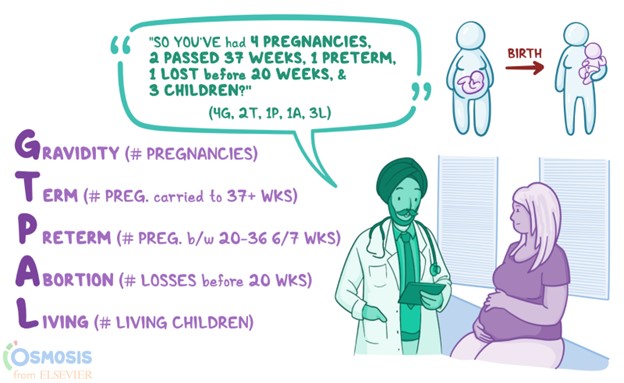A pregnant woman is admitted with premature rupture of the membranes. The nurse is assessing the woman closely for possible infection. Which findings would lead the nurse to suspect that the woman is developing an infection? Select all that apply.
Cloudy malodorous fluid
Abdominal tenderness
Fetal bradycardia
Elevated maternal pulse rate
Decreased C-reactive protein levels
Correct Answer : A,B,C,D
Choice A Reason: This is correct because cloudy malodorous fluid indicates that the amniotic fluid is contaminated with bacteria or other microorganisms that can cause infection in the woman or the fetus. Normally, amniotic fluid is clear and odorless.
Choice B Reason: This is correct because abdominal tenderness suggests that the woman has inflammation or irritation of the uterus or other pelvic organs due to infection. Abdominal tenderness can also be accompanied by cramping, pain, or fever.
Choice C Reason: This is correct because fetal bradycardia, which is a slow fetal heart rate below 110 beats per minute, indicates that the fetus is experiencing distress or hypoxia due to infection. Fetal bradycardia can be detected by electronic fetal monitoring or Doppler device.
Choice D Reason: This is correct because elevated maternal pulse rate, which is a heart rate above 100 beats per minute, indicates that the woman has an increased metabolic demand or systemic inflammation due to infection. Elevated maternal pulse rate can also be caused by dehydration, anxiety, or pain.
Choice E Reason: This is incorrect because decreased C-reactive protein levels do not indicate infection. C-reactive protein (CRP) is a protein that is produced by the liver in response to inflammation or infection. Increased CRP levels can be a sign of infection, but decreased CRP levels can be normal or indicate other conditions such as liver disease or malnutrition.
Nursing Test Bank
Naxlex Comprehensive Predictor Exams
Related Questions
Correct Answer is D
Explanation
Choice A Reason: This is incorrect because it is too early. Naegele's rule is a formula that estimates the date of birth by adding one year, subtracting three months, and adding seven days to the date of the last menstrual period. Applying this rule to April 11 gives February 18, not February 24.
Choice B Reason: This is incorrect because it is too early. Naegele's rule gives February 18, not January 18.
Choice C Reason: This is incorrect because it is too early. Naegele's rule gives February 18, not January 25.
Choice D Reason: This is correct because it follows Naegele's rule. Adding one year, subtracting three months, and adding seven days to April 11 gives February 18.
Correct Answer is B
Explanation
Choice A Reason: This option is incorrect because it underestimates the number of pregnancies (gravida) and overestimates the number of preterm births (preterm). The client has had four pregnancies (twins count as one pregnancy), not three. The client has had one preterm birth (the twins), not two.
Choice B Reason: This option is correct because it accurately reflects the client's obstetric history. GTPAL stands for Gravida, Term, Preterm, Abortions, and Living children. Gravida is the number of pregnancies a woman has had, regardless of outcome. Term is the number of pregnancies that ended at or beyond 37 weeks gestation. Preterm is the number of pregnancies that ended between 20 and 36 weeks gestation. Abortions are the number of pregnancies that ended before 20 weeks gestation, either spontaneously or induced. Living children are the number of children who are alive at present.
The client has had four pregnancies (gravida), one term birth (the son), one preterm birth (the twins), one abortion (the miscarriage), and three living children (the twins and the son).
Choice C Reason: This option is incorrect because it overestimates the number of preterm births (preterm) and underestimates the number of living children (living). The client has had one preterm birth (the twins), not two. The client has three living children (the twins and the son), not one.
Choice D Reason: This option is incorrect because it underestimates the number of pregnancies (gravida) and overestimates the number of abortions (abortions) and preterm births (preterm). The client has had four pregnancies (twins count as one pregnancy), not three. The client has had one abortion (the miscarriage), not two. The client has had one preterm birth (the twins), not two.

Whether you are a student looking to ace your exams or a practicing nurse seeking to enhance your expertise , our nursing education contents will empower you with the confidence and competence to make a difference in the lives of patients and become a respected leader in the healthcare field.
Visit Naxlex, invest in your future and unlock endless possibilities with our unparalleled nursing education contents today
Report Wrong Answer on the Current Question
Do you disagree with the answer? If yes, what is your expected answer? Explain.
Kindly be descriptive with the issue you are facing.
